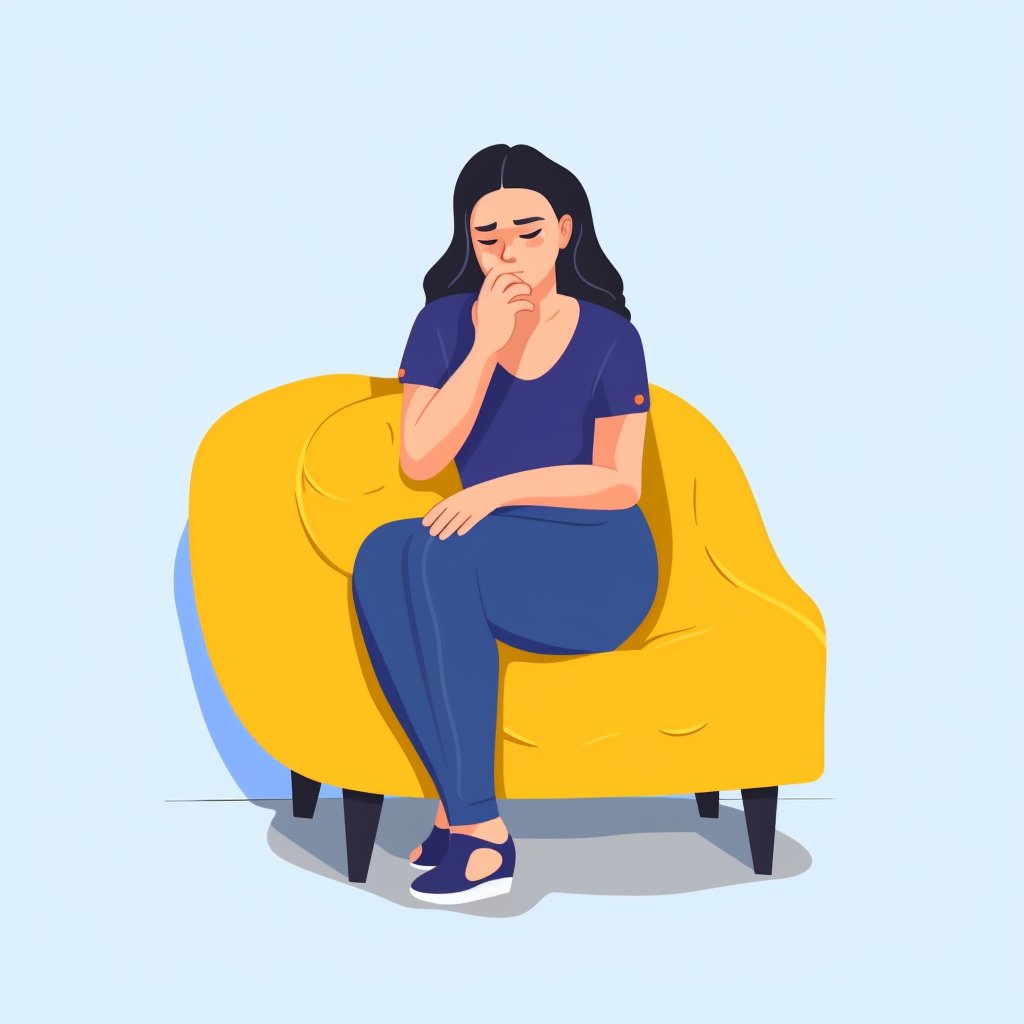Is PTSD a Mental Illness? When and How Does PTSD Get Triggered?

Post-Traumatic Stress Disorder (PTSD) is a mental health condition that can develop after experiencing or witnessing a traumatic event. PTSD affects millions of people worldwide and can cause a wide range of physical and emotional symptoms.
Understanding PTSD is essential because it can affect a person’s daily life, relationships, and overall mental health. People with PTSD may experience anxiety, depression, and other symptoms that can lead to social isolation, difficulties in work and relationships, and even suicidal thoughts. Therefore, it is crucial to identify and treat PTSD symptoms early on to prevent these negative outcomes.
In this HealWiser post, we will explore the question of whether PTSD is a mental illness, its symptoms, how and when it gets triggered, and available treatments. By the end of this article, you will have a better understanding of PTSD and the importance of addressing it for the well-being of those who suffer from it.
What is PTSD?
PTSD Meaning
Post-Traumatic Stress Disorder (PTSD) is a mental health condition that can develop after experiencing or witnessing a traumatic event. According to the Diagnostic and Statistical Manual of Mental Disorders, Fifth Edition (DSM-5), PTSD is diagnosed when a person experiences four main types of symptoms for more than one month following a traumatic event. These symptoms include intrusive thoughts or memories, avoidance of triggers, negative changes in mood or cognition, and changes in physical reactions or arousal.
Causes of PTSD
PTSD can develop after experiencing or witnessing a traumatic event, such as sexual or physical assault, natural disasters, accidents, war, and other events that cause significant harm. Not everyone who experiences a traumatic event develops PTSD, and the exact causes of PTSD are still not fully understood. However, research suggests that a combination of factors, such as genetics, brain chemistry, and life experiences, may increase the risk of developing PTSD.

How Common Is PTSD?
PTSD is a prevalent mental health condition, affecting millions of people worldwide. According to the National Center for PTSD, about 7-8% of the population will develop PTSD at some point in their lives, and women are more likely than men to develop PTSD. Among military veterans, the prevalence of PTSD is even higher, with an estimated 11-20% of veterans who served in Operation Enduring Freedom and Operation Iraqi Freedom experiencing PTSD in a given year.
Acute PTSD vs Chronic PTSD
“Read the article below and discover the differences between acute and chronic PTSD”
Is PTSD a Mental Illness?
Explanation of Mental Illness
Mental illness is a broad term that describes a range of conditions that affect a person’s thinking, emotions, behavior, or mood. Mental illnesses can vary in severity and duration and can interfere with a person’s ability to function in their daily life. Common examples of mental illnesses include depression, anxiety disorders, bipolar disorder, schizophrenia, and personality disorders.
PTSD as a Mental Illness
PTSD is widely recognized as a mental illness by mental health professionals and organizations such as the National Institute of Mental Health and the American Psychiatric Association. According to the American Psychiatric Association, PTSD is classified as a trauma- and stressor-related disorder, which is a category of mental disorders that develop in response to a traumatic or stressful event.
PTSD can cause significant impairment in a person’s daily life, including difficulties in social and occupational functioning, relationships, and physical health. It can also lead to other mental health conditions like depression and anxiety. Therefore, it is crucial to diagnose and treat PTSD as a mental illness to improve the well-being of those affected by it.
| Suggestion: Ongoing Traumatic Relationship Syndrome

Arguments for and against PTSD Being a Mental Illness
There have been some debates about whether PTSD should be considered a mental illness or not. Some argue that PTSD is a natural response to a traumatic event and is not a mental illness. Others argue that PTSD is a mental illness because it can cause significant impairment in a person’s daily life.
However, research has consistently shown that PTSD is associated with changes in brain structure and function, alterations in neurotransmitter systems, and other biological changes, which are also present in other mental illnesses. Therefore, PTSD is widely accepted as a mental illness by mental health professionals and organizations.
Symptoms of PTSD

Categories of PTSD Symptoms
PTSD symptoms are classified into four categories:
- Intrusion symptoms refer to the re-experiencing of the traumatic event, such as flashbacks or nightmares.
- Avoidance symptoms refer to efforts to avoid reminders of the traumatic event, such as avoiding certain people or places.
- Negative alterations in cognition and mood refer to feelings of guilt, shame, and negative beliefs about oneself or the world.
- Alterations in arousal and reactivity refer to hypervigilance, irritability, and an exaggerated startle response.
Common Symptoms of PTSD
Some common symptoms of PTSD include intrusive thoughts or memories of the traumatic event, nightmares, avoidance of situations or triggers related to the trauma, feelings of detachment or estrangement from others, and hypervigilance or exaggerated startle response. Other symptoms can include mood swings, negative thoughts or beliefs, and difficulties with concentration and memory.
Severity of Symptoms
The severity of PTSD symptoms can vary widely among individuals, ranging from mild to severe. In some cases, the symptoms may subside within a few weeks or months, while in others, they may persist for years or even a lifetime. Various factors, such as the nature and duration of the traumatic event, the age of the individual at the time of the trauma, and the presence of other mental health conditions, can also influence the severity of symptoms.
When and How Does PTSD Get Triggered?

Explanation of Triggers
Triggers are stimuli or situations that remind individuals of the traumatic event and can elicit symptoms of PTSD. Triggers can be internal or external and can include sensory experiences, thoughts, emotions, or situations that are reminiscent of the trauma.
Common Triggers for PTSD
Common triggers for PTSD can include certain sounds or smells, specific people or places, anniversaries of the traumatic event, or even certain words or phrases. Triggers can also be related to emotions like feeling overwhelmed, anxious, or fearful. Additionally, triggers can be physical sensations, such as pain or touch, which can remind individuals of the traumatic event.
How Triggers Can Affect Individuals Differently
Triggers can affect individuals differently depending on various factors, such as the nature and severity of the trauma, the individual’s coping mechanisms and support systems, and the presence of other mental health conditions. Some individuals may be more sensitive to certain triggers than others, while others may be able to manage their symptoms effectively even when faced with triggers. Additionally, some individuals may develop new triggers over time, or their existing triggers may change in intensity or frequency.
It is important for individuals with PTSD…
To be aware of their triggers and to develop coping strategies to manage them. This can involve learning relaxation techniques, seeking support from friends and family, or working with a mental health professional to develop a personalized treatment plan.
Treatment for PTSD

Types of Treatment for PTSD
There are several types of treatment available for individuals with PTSD, including psychotherapy, medication, and alternative therapies. The most commonly used psychotherapy for PTSD is cognitive behavioral therapy (CBT), which involves identifying and challenging negative thought patterns and behaviors that are associated with the traumatic event. Other forms of therapy that may be used include eye movement desensitization and reprocessing (EMDR), which involves guided eye movements while recalling traumatic memories, and prolonged exposure therapy, which involves gradually confronting and processing traumatic memories.
Medications such as selective serotonin reuptake inhibitors (SSRIs) and serotonin-norepinephrine reuptake inhibitors (SNRIs) may also be used to manage symptoms of PTSD, particularly for individuals who experience severe anxiety or depression.
Alternative therapies such as acupuncture, yoga, and meditation may also be helpful in managing PTSD symptoms, although more research is needed to determine their effectiveness.
Effectiveness of Treatment
Research has shown that various types of treatment can be effective in managing symptoms of PTSD. A review of multiple studies found that CBT and EMDR were both effective in reducing symptoms of PTSD (Bisson et al., 2013). Additionally, a meta-analysis of studies found that SSRIs were effective in reducing symptoms of PTSD, particularly for individuals with severe symptoms (Ipser et al., 2015).
It is important…
…to note that not all individuals with PTSD will respond to treatment in the same way, and some individuals may require more intensive or long-term treatment.
Availability of Treatment
Despite the availability of effective treatments for PTSD, many individuals with PTSD may not receive adequate treatment due to a lack of access to mental health care or the stigma surrounding mental illness. It is important for individuals with PTSD to seek help from a mental health professional and to advocate for their own care.
HealWiser’s Last Piece of Advice
In this article, we have explored the meaning and symptoms of PTSD, discussed whether PTSD is considered a mental illness, and examined common triggers for PTSD. We also looked at the different types of treatment available for individuals with PTSD and discussed their effectiveness and availability.
If you or someone you know is experiencing symptoms of PTSD, it is important to seek help from a mental health professional. Treatment can be effective in managing symptoms and improving quality of life.
Sharing your experiences can provide valuable insights and emotional support. So…
Share your experience with Heal Wiser and others in the comments section below this post.






